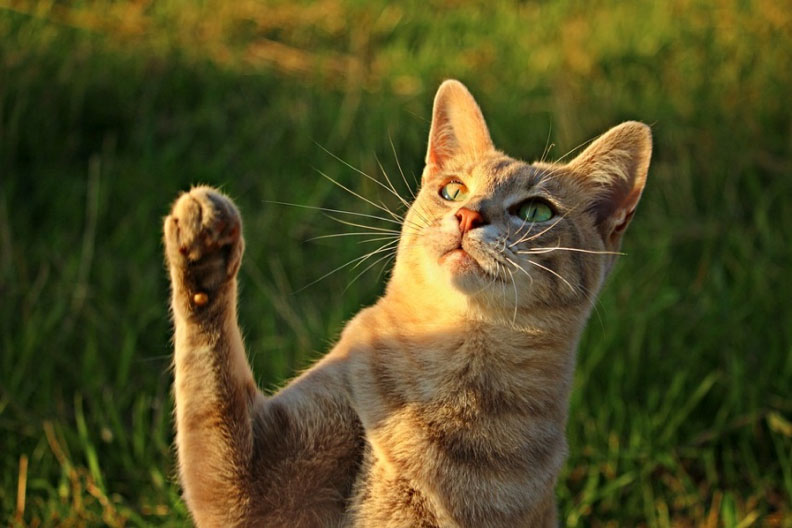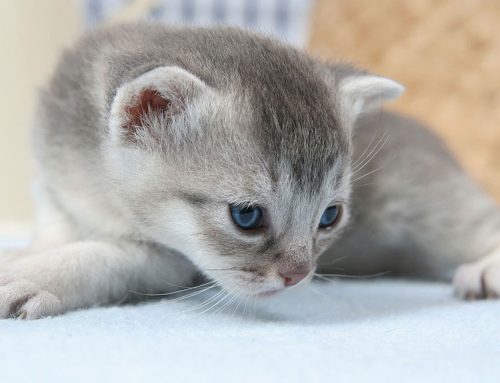Cats are living longer and longer lives. You may be wondering if your cat is classified as a senior. Unlike in people, being senior is defined by more than just age. Cats will age differently depending on a few factors – genetics, environmental influences, nutrition, and veterinary care. The American Association of Feline Practitioners loosely defines feline seniority as 11 to 14 years of age, with anything above that classified as geriatric. The longer the life, the more time you have with your beloved pet, but also the higher likelihood of them developing one of the five most common health conditions to threaten senior cats. Here you will learn about those conditions – what they are, how they’re caused, what symptoms to watch for, how to treat them, and what preventative steps you can take.
Arthritis

In a 2002 study by J Am Vet Med Association with 100 cats over the age of 12, it was found that nearly 90% of senior cats will develop or have already developed arthritis. Arthritis is the thinning of cartilage in between your cat’s joints. The cartilage acts as a cushion between those joints. If left untreated, the bones will begin to make contact, which will lead to pain for your pet. Cats have a natural survival instinct to hide any pain they may be feeling, which makes recognizing the symptoms even more crucial.
What do I look for?
Decreased mobility – maybe your cat is moving around less, perhaps not going for their favorite perch quite as often; change in normal activities – they may be less playful with their favorite toys; change in grooming habits; behavioral changes – is your cat treating you differently? This may seem like a silly thing to look for, but it can be indicative of something more serious going on.
Cancer

Cancer is the leading cause of death in senior cats. Cancer is really a blanket term for uncontrolled cell growth, which means there are many different forms this can take – many different kinds of cancer that can attack your pet. Cancer will happen when the cells grow into surrounding body tissue and disrupt the natural flow of the body’s systems. Because cancer is often devastating and fatal, it’s important to catch early.
What do I look for?
Weight loss; loss of appetite – your cat may only pick at his/her food; lumps that will get bigger and bigger over time; sores that just won’t heal; bleeding or discharge from your pet’s nose, mouth, or anus; difficulty swallowing, breathing, urinating, or defecating.
Hyperthyroidism

Your cat’s thyroid hormones are the driving force behind their body’s essential tasks – including the regulation of their metabolic rate, heart and digestive functions, muscle control, and the maintenance of their bones. Hyperthyroidism is caused by an uncontrolled overproduction of thyroid hormones. This is induced by an extended thyroid gland, which is generally the product of a benign tumor. If left untreated, hyperthyroidism can be life threatening.
What do I look for?
Hyperactivity; weight loss; increased appetite; excessive thirst; increased fecal volume – check those litter boxes!; increased urination; shortness of breath; vomiting – more than just your regular hairball; and diarrhea.
Kidney Disease

More than 30% of cats will get kidney disease. Senior cats are at a much higher risk. The kidney’s role is to filter waste from the bloodstream into urine to be expelled from the body. Kidney disease occurs when the kidneys lose their ability to function, causing harmful toxins to collect in the bloodstream. The scariest part of kidney disease is that it’s progressive. Once your cat has it, there’s no getting rid of it. But, if caught early enough, it can be successfully controlled, maintaining a good quality of life for your pet.
What do I look for?
Excessive thirst and urination – you may start to notice if you’re filling your cat’s water bowl more often than normal; weight loss; a decrease in appetite; lethargy – is your cat showing a lack of enthusiasm? For you, for his/her toys, for his/her favorite perch?; vomiting.
Diabetes

Though common in senior cats, overweight cats are especially at risk for developing diabetes. Diabetes occurs when your cat’s body cannot regularly control insulin. Because insulin plays a critical role in digestion, if it’s not regulated by your cat’s body, it will start to lose its ability to yield energy from your pet’s food and it will begin breaking down fat and protein as an alternative source for energy. If left untreated, diabetes will result in a shorter lifespan for your pet.
What do I look for?
Increased appetite but weight loss – if your pet seems to be more frequently going to their food bowl yet starts to appear thinner; increased thirst; increased urination.
What can you do?

Though each of these five conditions are very different, they have one very important thing in common. They all call for an excellent standard of health for your pet. The best care is always preventative care – and preventative care will almost always result in a longer lifespan and a better quality of life for your pet (and a smaller bill for you!). We typically recommend senior exams once every 6 months, so if your cat hasn’t been seen in the last 6 months, it’s best to give us a call and schedule an exam.
Because senior cats become afflicted with these health conditions more commonly than younger cats, a solid regimen of home care is crucial. The most key aspect of that is a stable, healthy diet. Senior cats that are also overweight are the highest risk cats. A healthy diet is a critical ally in mitigating the risk of these health conditions. The most common mistake made in the home care of cats is overfeeding. A good rule of thumb to feed by is 50 calories per kilogram a day. There is no universally recommended diet plan for senior cats because it hugely depends on a myriad of other factors – much like the factors that determine how your cat will age. If you have any questions on your cat’s diet, just call and ask us. We are always here for you.









Leave A Comment